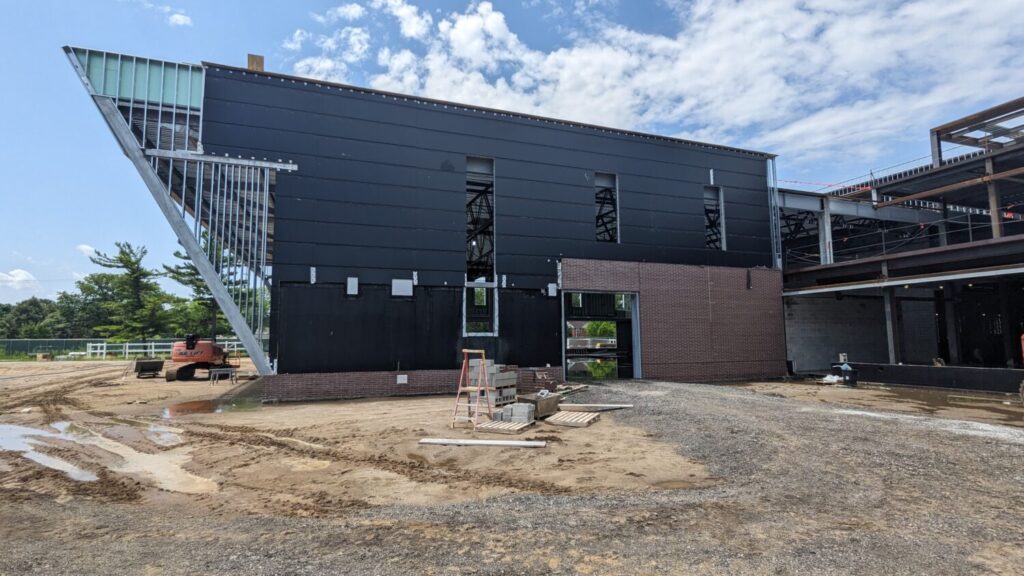Written By: Kyle Rieth, Director of Building Performance
Building envelope commissioning (BECx) is a critical process in ensuring the durability, energy efficiency, and overall performance of a building’s enclosure. It involves verifying that the building’s exterior (walls, windows, roof, etc.) meets the design specifications and functions as intended under real-world conditions. Having been involved in multiple BECx projects, there are several key lessons that have emerged. These lessons can help building owners, architects, and contractors avoid common pitfalls and ensure the best possible outcome for their projects.
1. Early Involvement is Key
One of the most significant lessons learned in BECx is the importance of engaging commissioning professionals early in the project. The design phase is the ideal time to incorporate BECx into the project because any issues identified can be addressed before construction begins. By reviewing design documents, material selections, and construction details early on, the commissioning agent can spot potential problems and recommend improvements that will prevent costly changes later.
Takeaway: BECx should not be an afterthought. Engage commissioning agents as early as possible to integrate their feedback into the design phase.
2. Coordination Between Teams is Critical
The success of building envelope commissioning hinges on the collaboration between architects, engineers, contractors, and commissioning agents. Often, problems arise due to miscommunication or a lack of coordination between these teams. A robust process for sharing information, tracking decisions, and resolving issues ensures that everyone is aligned throughout the project lifecycle.
For example, if the window installation team is not fully aware of the waterproofing details, improper installation could lead to water infiltration. BECx agents need to facilitate regular communication to ensure such oversights don’t occur.
Takeaway: Establish strong communication protocols and regular check-ins to align all parties on the expectations and progress of the building envelope.
3. Mock-Ups and Testing Are Essential
While it may be tempting to skip or minimize testing to save time or costs, this can lead to major issues down the road. Performance mock-ups and field testing allow the project team to verify that the building envelope components work together as intended under various conditions.
Testing should include air leakage tests, water penetration tests, thermal imaging, and infrared scanning to detect any weaknesses. These tests provide valuable insights and can uncover hidden defects that might otherwise go unnoticed until after occupancy.
Takeaway: Never skip mock-ups and testing. They are crucial for validating design assumptions and ensuring the building performs as required.
4. Document Everything Thoroughly
In any BECx project, documentation is your best friend. Keeping detailed records of everything from design reviews, materials specifications, testing protocols, and commissioning reports will help provide accountability and transparency. If an issue arises post-occupancy, this documentation is crucial for diagnosing and resolving the problem.
Additionally, thorough documentation helps streamline future maintenance, as building operators can refer back to the commissioning reports to understand the original design intent and operational requirements.
Takeaway: Maintain comprehensive documentation throughout the BECx process. This not only mitigates risk but also ensures long-term performance and ease of maintenance.
5. Real-World Conditions Can Differ from Design Assumptions
Even the most thorough design and specification documents can fall short when real-world conditions come into play. This is especially true for the building envelope, which must withstand extreme weather conditions, environmental factors, and sometimes unforeseen site constraints.
BECx helps bridge the gap between design intent and real-world performance. Through field inspections, testing, and ongoing verification, issues like thermal bridging, air leakage, and water penetration are caught before they compromise the building’s performance.
Takeaway: Expect the unexpected and use the BECx process to adapt to real-world conditions that could impact building performance.
6. Training and Education are Critical for Long-Term Success
Once the building is occupied, the operations and maintenance (O&M) staff must understand the intricacies of the building envelope. Ongoing education and training are essential to ensuring the building envelope continues to perform as intended. This is especially important for systems like green roofs, high-performance facades, and complex waterproofing systems, which may require specialized knowledge for proper maintenance.
A common pitfall is not providing the necessary training to facility teams, which can lead to improper maintenance or repairs that compromise the building envelope’s integrity and warranties.
Takeaway: Ensure that operations and maintenance staff receive the proper training to maintain the performance of the building envelope over time.
7. Quality Control is Non-Negotiable
Quality control is one of the most important aspects of BECx. Contractors need to follow strict guidelines to ensure the building envelope is installed correctly. Simple mistakes, like improper sealant application or misaligned vapor barriers, can lead to costly repairs, poor energy performance, and even structural damage. Having a BECx agent perform inspections at key milestones can ensure that best practices are followed and that any issues are corrected promptly.
Takeaway: Strict quality control processes should be in place during construction to ensure the building envelope is installed and functions properly.
Conclusion
Building envelope commissioning is a complex but critical process that ensures the long-term performance, energy efficiency, and durability of a building. By engaging commissioning professionals early, coordinating across teams, testing thoroughly, and maintaining rigorous quality control, project teams can avoid common pitfalls and deliver a building that performs as intended.






